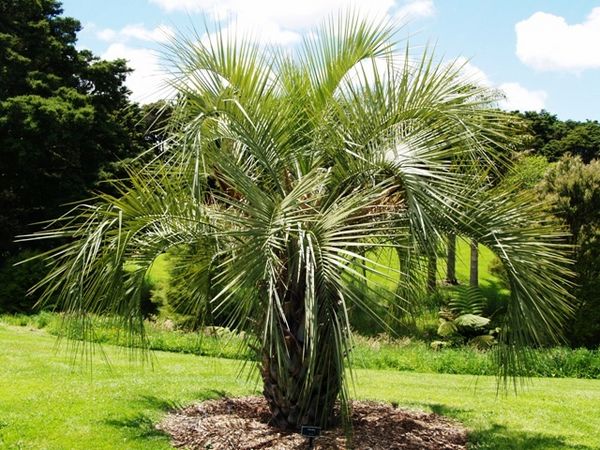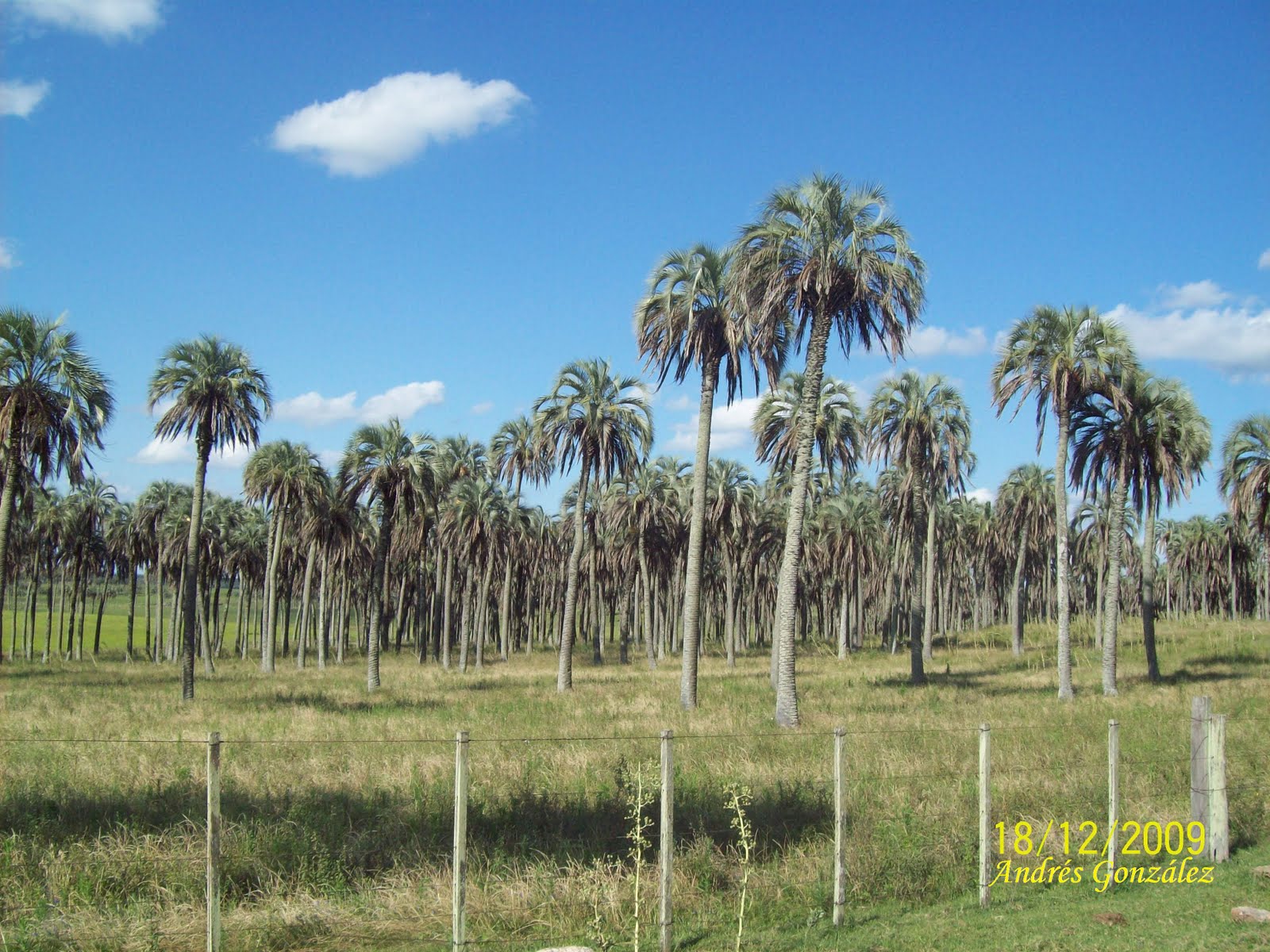Butia yatay
Copies of Butia yatay in the National Park El Palmar, Entre Ríos Province
The yatay palm ( Butia yatay ) is a plant of the palm family. It is easy to be confused with the smaller, closely related Butia capitata from the same region of origin.
Occurrence
In their region of origin in the south of Brazil, Uruguay and northeastern Argentina, the yatay palm once formed large forests. She grew up there, on sandy soil. Many of them were cleared for agricultural use. The largest preserved Yatay Forest is located on an area of 85 km ² national park El Palmar in the Argentine province of Entre Ríos. Today Butia yatay is also planted in other subtropical regions as an ornamental palm. It also tolerates dry heat.
Features
Butia yatay is durable, can be up to 12 m high and is therefore higher than most other species of the genus Butia. Its trunk is covered with dark leaf bases. The up to 2 m long, bluish leaves are pinnate. The yellow inflorescences contain up to 100 flowers. The fruits have a diameter of 3 to 5 cm and are not edible for humans. However, they attract many birds and were the main food of the likely extinct Türkisaras.
Living conditions
Butia preferred yatay well-drained, slightly alkaline or neutral soil and plenty of sun. During growth it needs a lot of moisture, but in winter it tolerates drought and temperatures below freezing. For germination, the seeds need warmth and moisture. Under unfavorable conditions, germination may suspend several months.
Synonyms
- Calappa yatay ( Mart. ) Kuntze
- Cocos yatay Mart.
- Butia capitata subsp. yatay ( Mart. ) Herter
- Syagrus yatay ( Mart. ) Glassman










